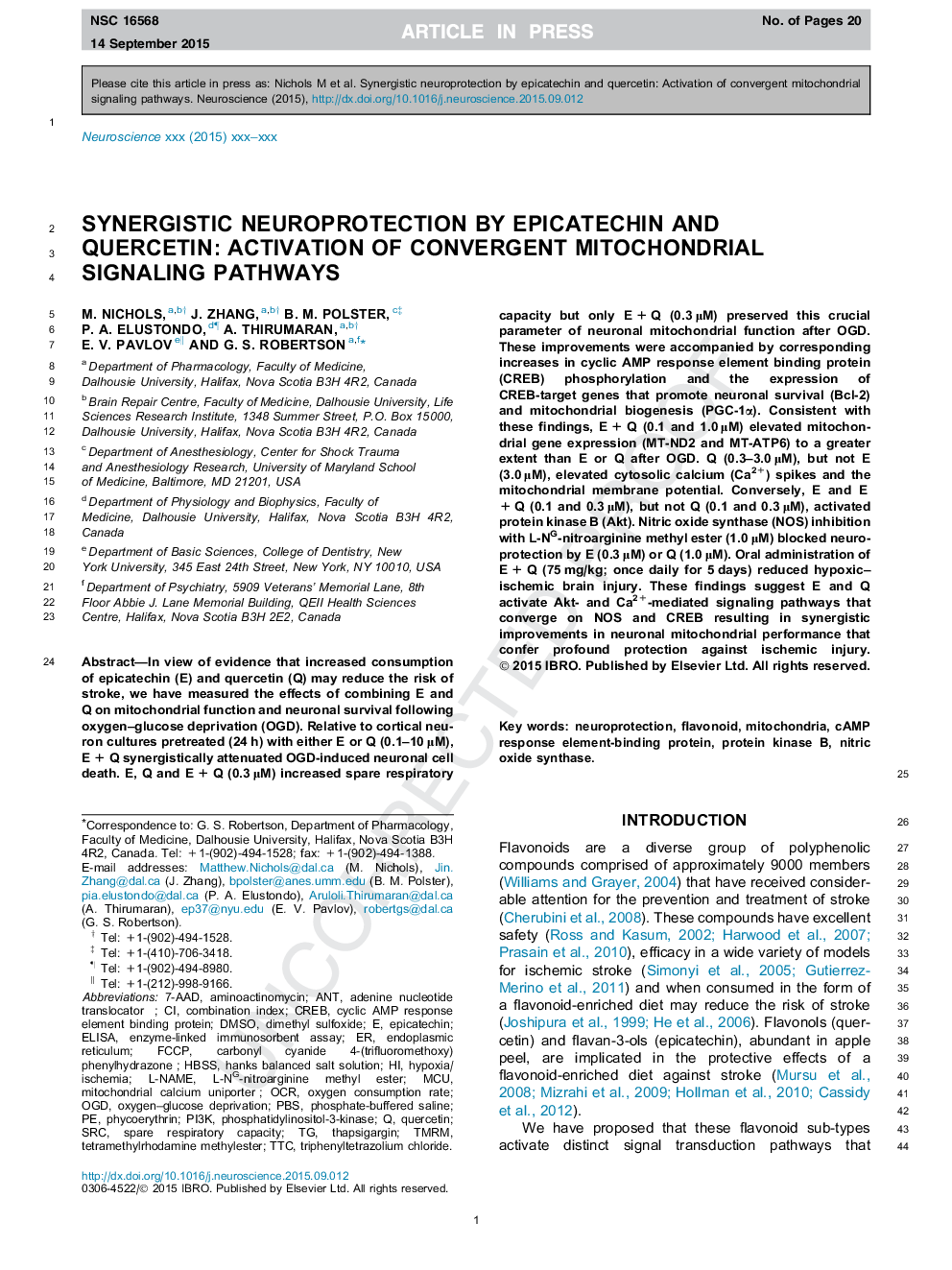| Article ID | Journal | Published Year | Pages | File Type |
|---|---|---|---|---|
| 6271924 | Neuroscience | 2015 | 20 Pages |
Abstract
In view of evidence that increased consumption of epicatechin (E) and quercetin (Q) may reduce the risk of stroke, we have measured the effects of combining E and Q on mitochondrial function and neuronal survival following oxygen-glucose deprivation (OGD). Relative to mouse cortical neuron cultures pretreated (24 h) with either E or Q (0.1-10 μM), E + Q synergistically attenuated OGD-induced neuronal cell death. E, Q and E + Q (0.3 μM) increased spare respiratory capacity but only E + Q (0.3 μM) preserved this crucial parameter of neuronal mitochondrial function after OGD. These improvements were accompanied by corresponding increases in cyclic AMP response element binding protein (CREB) phosphorylation and the expression of CREB-target genes that promote neuronal survival (Bcl-2) and mitochondrial biogenesis (PGC-1α). Consistent with these findings, E + Q (0.1 and 1.0 μM) elevated mitochondrial gene expression (MT-ND2 and MT-ATP6) to a greater extent than E or Q after OGD. Q (0.3-3.0 μM), but not E (3.0 μM), elevated cytosolic calcium (Ca2+) spikes and the mitochondrial membrane potential. Conversely, E and E + Q (0.1 and 0.3 μM), but not Q (0.1 and 0.3 μM), activated protein kinase B (Akt). Nitric oxide synthase (NOS) inhibition with L-NG-nitroarginine methyl ester (1.0 μM) blocked neuroprotection by E (0.3 μM) or Q (1.0 μM). Oral administration of E + Q (75 mg/kg; once daily for 5 days) reduced hypoxic-ischemic brain injury. These findings suggest E and Q activate Akt- and Ca2+-mediated signaling pathways that converge on NOS and CREB resulting in synergistic improvements in neuronal mitochondrial performance which confer profound protection against ischemic injury.
Keywords
7-AADMCUHBSSTTCANTOCRSRCTMRMOGDPBSThapsigarginepicatechinFCCPPI3Ktetramethylrhodamine methylesterCREBDMSOHanks balanced salt solutionl-NAMEl-NG-Nitroarginine methyl esteradenine nucleotide translocatorTriphenyltetrazolium chlorideEnzyme-linked immunosorbent assayELISADimethyl sulfoxidecombination indexendoplasmic reticulumspare respiratory capacityphycoerythrinphosphatidylinositol-3-kinaseFlavonoidMitochondrial calcium uniporterNeuroprotectionoxygen–glucose deprivationPhosphate-buffered salineMitochondriaOxygen consumption ratenitric oxide synthasehypoxia/ischemiacyclic AMP response element binding proteincAMP response element-binding proteinprotein kinase BCarbonyl cyanide 4-(trifluoromethoxy) phenylhydrazoneQuercetin
Related Topics
Life Sciences
Neuroscience
Neuroscience (General)
Authors
M. Nichols, J. Zhang, B.M. Polster, P.A. Elustondo, A. Thirumaran, E.V. Pavlov, G.S. Robertson,
